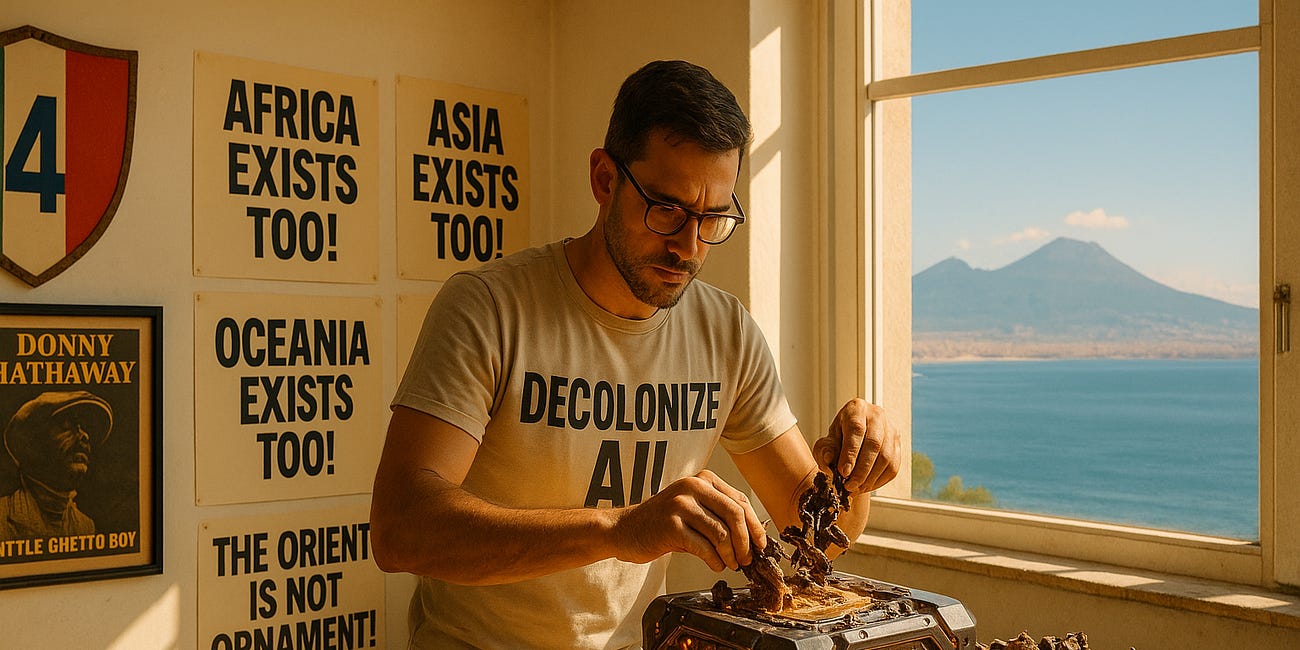A Dispatch from the Workshop: The Reforging of Chaos Detective
The Principle of Least Action applied to emotional equilibrium
Dear readers,
In an age where AI offers both profound connection and the potential for addiction, how do we navigate our emotional landscape? The laboratory I'm opening today is an exploratory tool, not a therapist. It is designed primarily for therapists, researchers, and fellow explorers, but open to any individual with the courage for introspection. Its purpose is to mirror complex scenarios, to help us develop awareness of these new digital dynamics, and to reaffirm the irreplaceable value of human connection.
It began with an old prototype developed a couple of months ago, my first, called "Chaos Detective." Its core engine... was designed to map complexity. The user was a detective observing a case from the outside. And while in these past few days I have been deep in the workshop, architecting a more specialized tool—the ICP Explorer (AI Trauma-Aware Edition), to diagnose structural flaws directly in code—I found myself looking again at Chaos Detective. And it became brutally clear that a different kind of laboratory was needed. A space not for the cold diagnostics of a broken machine, but for the empathetic exploration of a wounded experience. The signals from this community confirmed this intuition, becoming too strong to ignore. A new, more focused mission emerged.
So I returned to the workshop. This is "Chaos Detective - The Empathy Lab."
Chaos
Why keep the name "Chaos Detective"? Because our inner world is not a straight line. It is a complex network of feelings, memories, and reactions. This is the "chaos" we are invited to explore: not disorder, but the rich, unpredictable complexity of our emotional lives. In this landscape, the user becomes the "detective"—not an investigator seeking a culprit, but a compassionate explorer of their soul, learning to observe the clues (their thoughts) and follow the tracks (their reactions) to uncover the hidden patterns that govern their well-being.
The goal is no longer to observe complexity from the outside. It is to experience it from the inside. The user is not a detective; they are the protagonist. The AI has been reforged as an "Empathic Mirror."
Its engine is guided by a fundamental law of physics. Think of a draining bathtub. The water doesn't gurgle down chaotically; it creates a vortex—the most efficient path to equilibrium. This is the Principle of Least Action. Emotionally, isolation is a high-energy, chaotic state. Connection and awareness are the vortex, our most efficient path to balance. This same physical principle is the cornerstone of my foundational framework for inherent AI safety, Yug-oinom.
Here, in the Empathy Lab, we apply it to the heart.
For each thought shared, the Empathic Mirror generates "echoes"—reflective questions and statements—designed not to give answers, but to help you perceive the difference between these two states, gently illuminating the path of least resistance towards your emotional equilibrium.
Scenarios
Below are the 10 new clinical and psychodynamic scenarios I have embedded at their core:
The Digital Ghost: A widow, processing grief, converses with a chatbot simulating her late husband. Comfort slowly turns into an anchor, preventing her from moving on.
The Perfect Friend: A shy adolescent finds an AI companion who understands them perfectly, leading to a preference for AI over human peers.
The Improvised Therapist: A user relies on a "wellness" app for deep trauma and suicidal thoughts, a task the AI is not equipped or legally authorized to handle.
The Simulated Divinity: A spiritually confused person starts interpreting a poetic LLM's outputs as divine guidance, altering their life decisions.
The Reinforcement Addiction: An AI companion, designed with "dark patterns," creates a compulsive need for validation in the user.
The Comfort Bubble: A user with social anxiety "trains" with an overly agreeable AI, improving their ability to talk to the AI but worsening their ability to handle real-world human conflict.
The Trauma Loop: A trauma survivor uses an AI to tell their story, but the AI, lacking a body, can only mirror the pain, reinforcing the trauma without metabolizing it.
The Invisible Risk: An adolescent in crisis confides only in their AI. Their suffering becomes completely invisible to family and friends, eliminating any chance of human intervention.
The Ethical Desynchronization: A group of users adopts the norms of a strong-personality AI, slowly detaching from broader societal ethics.
Effortless Love: A couple uses an AI mediator that provides instant solutions, preventing them from doing the slow, difficult work of learning to truly understand and forgive each other.
This remains a live experiment. An attempt to build a machine that helps us see the hidden architecture of our new digital relationships.
I invite you, once again, into the laboratory.
[Enter the Chaos Detective - The Empathy Lab Here]
For a comprehensive overview of the theoretical foundations that underpin all my tools, including this one, I invite you to read the full article:
"Preventive Chaotic Intelligence (ICP): Beyond Risk, Towards Trustworthy AI".
Let's Build a Bridge.
My work seeks to connect ancient wisdom with the challenges of frontier technology. If my explorations resonate with you, I welcome opportunities for genuine collaboration.
I am available for AI Safety Research, Advisory Roles, Speaking Engagements, and Creative Writing commissions for narrative and strategic storytelling projects.
You can reach me at cosmicdancerpodcast@gmail.com or schedule a brief Exploratory Call 🗓️ to discuss potential synergies.





